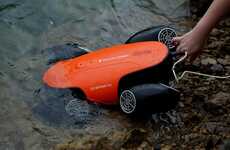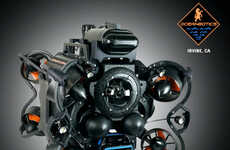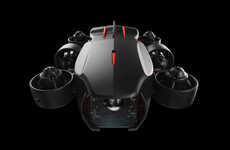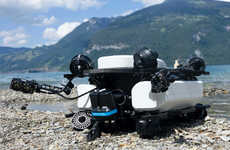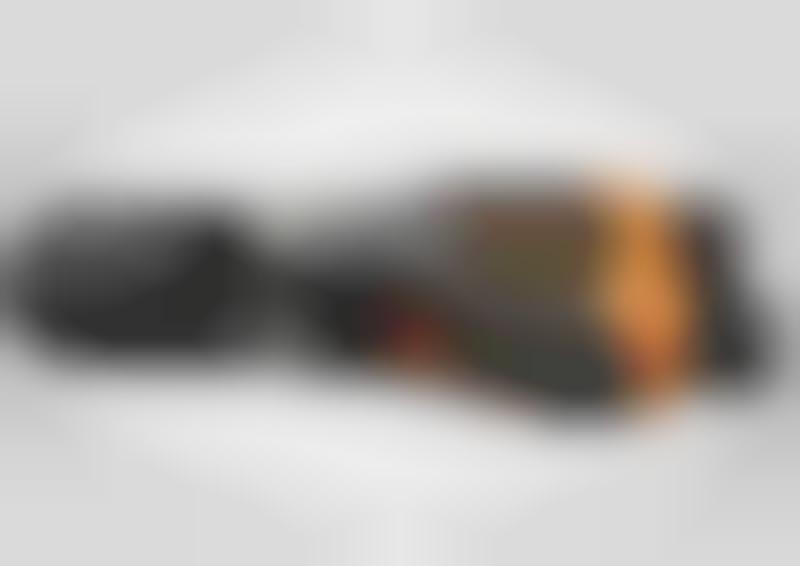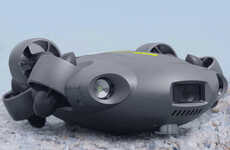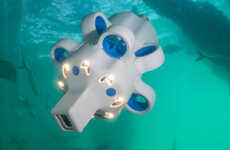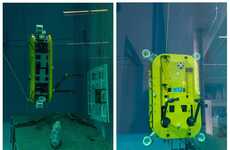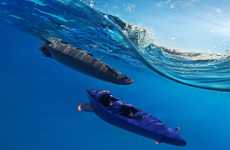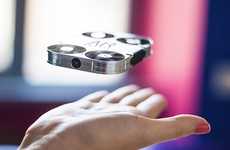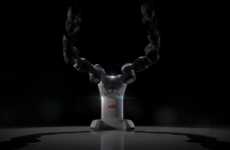
The 'Remote Operated Vehicle' is a Camera-Mounted Submarine Drone
References: yankodesign
Aerial drones dominate the skies, offering majestic bird's-eye-view vistas, but the 'Remote Operated Vehicle' concept from designer Ron Ferencz gives consumers an equally awe-inspiring perspective: underwater. The Remote Operated Vehicle, or ROV, is a camera-mounted aquatic drone that could take over the waters the way that aerial drones have taken over the skies.
ROV operates through the use of three fans -- two for horizontal movement and one for vertical movement. At the front of the drone is a camera that attaches via a joint, allowing a nearly 360 degree viewing angle regardless of the orientation of the ROV's body. It can also use the camera joint to swish its body left and right, increasing the speed at which it moves.
ROV operates through the use of three fans -- two for horizontal movement and one for vertical movement. At the front of the drone is a camera that attaches via a joint, allowing a nearly 360 degree viewing angle regardless of the orientation of the ROV's body. It can also use the camera joint to swish its body left and right, increasing the speed at which it moves.
Trend Themes
1. Underwater Drones - The ROV concept presents opportunities for developing underwater drones with enhanced capabilities for exploration and data collection.
2. Remote-controlled Aquatic Vehicles - There is a growing demand for aquatic drones to conduct underwater inspections for industries such as offshore energy, marine research, and aquaculture.
3. 360-degree Camera Technology - 360-degree camera technology can be applied to develop underwater cameras that give a complete view of the underwater environment for exploration and research purposes.
Industry Implications
1. Offshore Energy - ROVs can be used in the offshore energy industry for underwater inspections and maintenance of oil rigs and pipelines.
2. Marine Research - Aquatic drones like the ROV can be used for marine research purposes such as coral reef surveys, mapping ocean floors, and studying marine life.
3. Aquaculture - Underwater drones can be used for monitoring fish farms and collecting data on water quality, fish health, and feeding patterns.
6.9
Score
Popularity
Activity
Freshness

